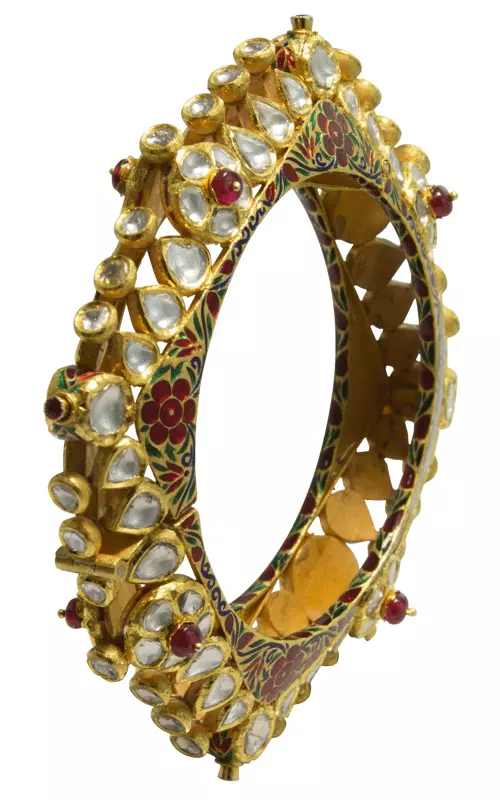The history of Indian jewellery is fascinating: no other culture has such intense reverece for jewellery. From the great Maharajas of the Mogul period to today’s elaborate wedding extravaganzas, India’s treasure trove of jewels have been well preserved. Perhaps the most fascinating of the varied styles and techniques developed over centires by Indian craftsmen is that of Kundan-style setting. Invented long before the introduction of prong setting, virtually all gems in early Indian jewellery were “kundan-set”.
The process begins with the designer who produces ideas from rubbings of popular finished pieces, often closely guarded within the goldsmith’s family. They also incorporate design details specific to the shapes and sizes of the gems provided by the client making each design unique.
Fabrication requires the creation of hollow metal moulded units which are filled with lac (a dark and sticky secretion from an insect, typically found in India) and later engraved and embedded with gems. The goldsmith crafts this metal mould, carefully following the drawing, while accommodating the stone shapes and other details.
Once ready, the gem-setter (kundansaz) is tasked to set each stone in place, expertly compressing narrow ribbons of pure gold (kundan), layer upon layer, to form a solid wedge around each gemstone. The most amazing feature of this setting style is that no soldering is required as pure gold is malleable in a cold state.
Integral to this jewellery style is the backing of gems with foil of thinly beaten silver sheet which helps to maximize the brilliance of the gems, since most stones lack the reflection found in present day cutting styles. Most Mughal jewellery was this unique combination of kundan-set gems on the front and extraordinarily detailed enamel pigments on the back to complement the design.
Both modern and traditional jewellery fabrication methods provide fascinating insight into different cultures and understanding these disciplines helps one truly appreciate and enjoy the jewels that are part of our daily lives.

Tanja M. Sadow G.J.G.
Dean and founder of the Jewellery Design and Management International School
